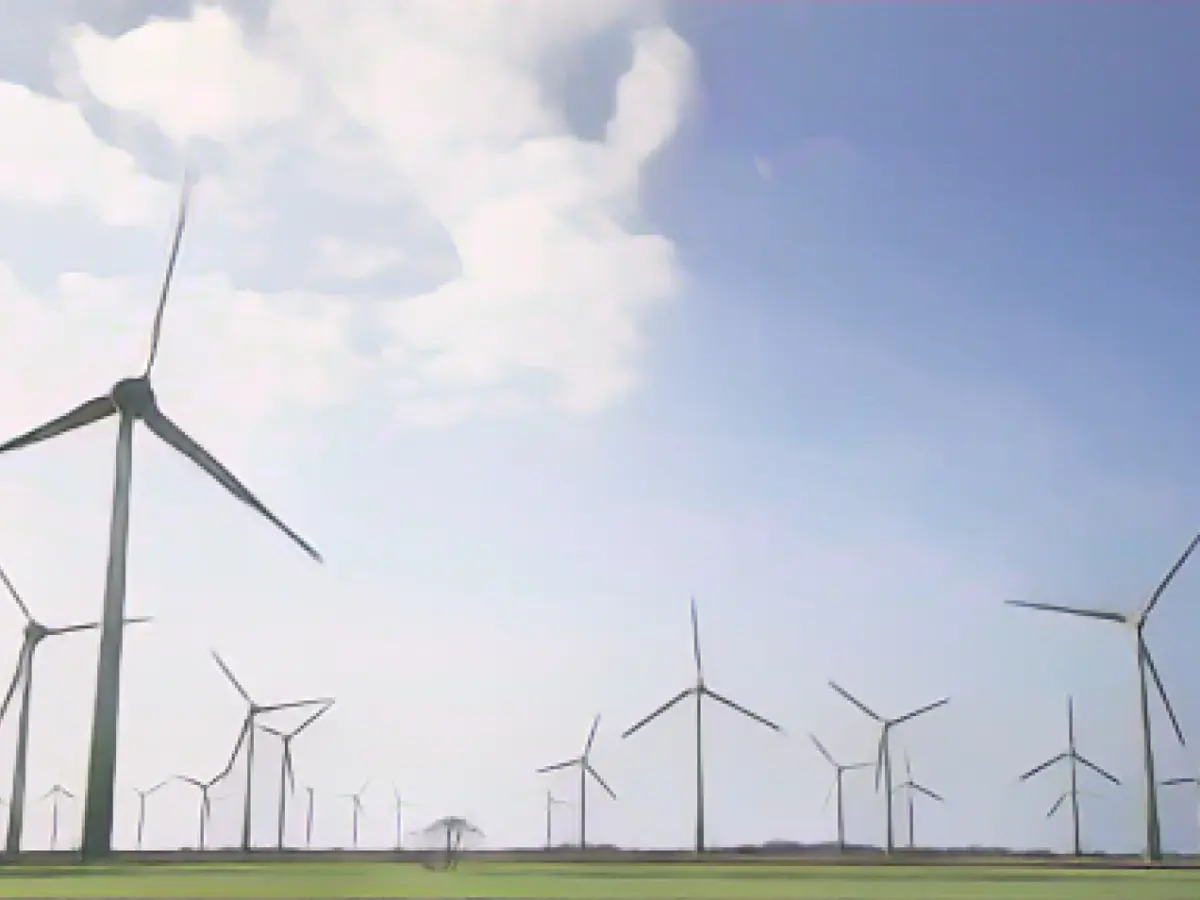Energy - Schleswig-Holstein plans significantly more wind turbines
There are to be significantly more wind turbines in Schleswig-Holstein by 2030. The black-green state government wants to increase the installed wind power capacity on land to 15 gigawatts. "In order to achieve this goal, we have to intervene much more strongly than before in protection issues in order to designate additional priority areas," said Interior Minister Sabine Sütterlin-Waack on Tuesday.
To date, two percent of the state's land area has been designated as areas for wind turbines. In future, three percent is to be designated. This corresponds to an additional area of 160 square kilometers. By comparison, that is significantly more than the city of Kiel, which covers just under 119 square kilometers.
As of the beginning of July, 3119 wind turbines were in operation on land. They had a total output of 7.9 gigawatts. A further 369 sites have already been approved. They will generate an additional 1.9 gigawatts. According to the state government, this means that the target of producing 10 gigawatts of onshore wind power will already be achieved by 2025. New turbines are on average around 200 meters high. The CDU and Greens had agreed in the coalition agreement to expand onshore wind power to 15 gigawatts. 5 gigawatts correspond to the output of several nuclear power plants.
The black-green coalition wants to draw up the new regional plans by 2027 at the latest. The distances between turbines and houses are to remain unchanged - they are 400 meters from individual houses and 800 and 1000 meters from villages and towns.
"Two sides of the same coin"
On the other hand, there are interventions in landscape and species protection as well as monument protection. "The expansion of renewable energies is in the overriding public interest," said Environment Minister Tobias Goldschmidt. "We have made compromises in weighing up the protected interests in favor of climate protection." Areas of particular importance for nature conservation would continue to be kept free of wind turbines, said the Green politician. "Climate protection and nature conservation are two sides of the same coin."
Specifically, the coalition no longer excludes landscape conservation areas across the board. It will adjust the distance to forests depending on their ecological value. The protection areas around breeding grounds for large birds will be partially reduced. There are also changes to nature conservation areas. The government expects to publish the criteria in the second quarter of 2024 with the draft of the new wind plans.
The state government is hoping for less resistance to the new plans than years ago. "We have something of a wind peace in the state," said Goldschmidt. A total of 54 complaints were filed against the previous regional plans, but only two against the erection of wind turbines. The others were aimed at designating more areas. In March, the Higher Administrative Court overturned the wind plans for the north of the state.
In principle, areas already designated for wind power are to be retained. In future, wind turbines will no longer have to be three times the height of residential buildings and five times the height of settlements. There are also no height limits. In future, old wind turbines may also be replaced by newer, more powerful turbines (repowering) outside the priority areas. However, this must not adversely affect public interests or spatial planning objectives.
Criticism from Nabu - praise from the industry
The Nature and Biodiversity Conservation Union (Nabu) criticized the reduction in the minimum distances to breeding grounds for white-tailed eagles and black storks from 3,000 to 2,000 meters. "We consider this to be unacceptable," nature conservation officer Thomas Behrends told the German Press Agency. Black storks are threatened with extinction. It is still unclear whether it will remain at 1500 meters to red kites. According to initial impressions, Goldschmidt has essentially kept an eye on nature conservation issues. Deputy Chairman Fritz Heydemann fears that the abolition of the blanket distance of 100 meters will lead to an increase in the killing of forest-dwelling bats such as the common noctule. "In addition, it is unlikely to be possible to prevent the proverbial bird flight path - Fehmarn and the Oldenburg peninsula - from being blocked even more than before by wind turbines."
The wind power-critical Vernunftkraft initiative also criticized the plans. "All residents living near a wind industry area have obviously been declared almost outlawed by the state government's decision today," said Chairwoman Susanne Kirchhof. Industry interests had once again prevailed, where politics should actually make balanced decisions and prevent damage.
According to FDP parliamentary group leader Christopher Vogt, the government is jeopardizing the acceptance of wind energy by changing the distance rules. "With this plan, the CDU is breaking an important election promise." The reason for this is not primarily the requirements of the federal government, but the expansion targets agreed by the CDU and Greens in the coalition agreement.
The wind energy sector welcomed the plans. "The black-green government has recognized that significantly more areas are needed for wind energy on the way to climate neutrality and is now also fulfilling the federal requirements," said Marcus Hrach, Managing Director of the State Renewable Energy Association. "However, in order to achieve the 2030 energy policy target, state planning is still required to designate new, buildable areas for modern wind turbines as quickly as possible." Completing the planning process in 2027 would be far too late. The areas currently designated have already been largely built on and planned.
SPD energy politician Marc Timmer described the expansion as the right thing to do. "This includes providing more space for wind turbines as well as higher turbines that produce more yield and therefore cheaper electricity." However, because more people will live near wind farms in the future, it is important to balance interests. Compensation payments are conceivable.
According to official figures, around 29.8 million megawatt hours (MWh) of electricity were generated in Schleswig-Holstein in 2022 - 24.2 percent more than in the previous year. 26 million came from renewable energies. Onshore wind turbines alone generated 14.2 million MWh, almost as much as the state consumed in total.
Read also:
- A clan member is punished here
- Traffic lawyer warns: Don't talk to the police!
- Will he be convicted as Jutta's murderer after 37 years?
- He also wanted to kill his cousin
Source: www.stern.de







